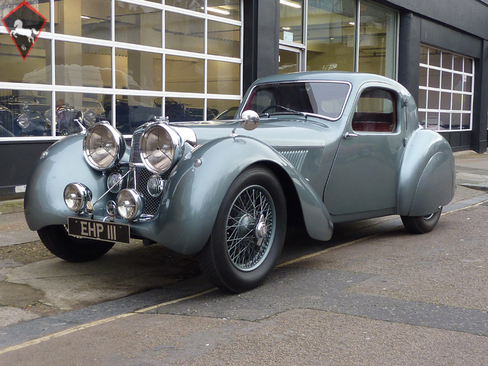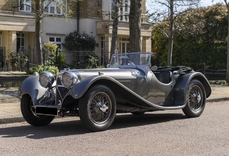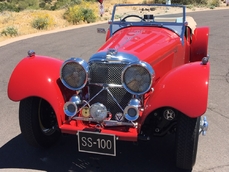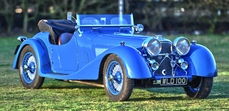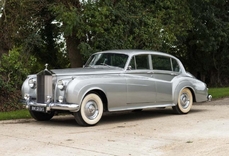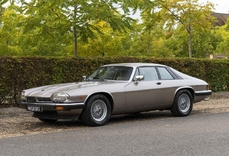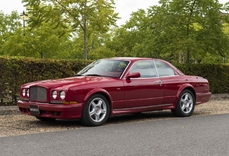SS 100 1938
General description :
Breathtakingly beautiful and unique. Rarer than a Bugatti Atlantique and arguably just as pretty. Still finished in its original Gunmetal Grey with Red leather colour scheme, This is definitely one of the most important Jaguars ever built and would be the centre piece of any serious World Class Jaguar collection.
1938 SS100 Jaguar Grey Lady Fixed Head Coupe This stunning fixed-head coupe was one of the most closely guarded Show Secrets of 1938. Unveiled to popular acclaim on the SS Jaguar stand at Earls Court, it gave dramatic proof that the work of a British company could rival the finest products of the most glamorous Continental coachbuilders. Years ahead of its time in concept, this graceful closed two-seater was a wonderful ‘tour de force’ of styling that demonstrated the sheer genius of that most naturally gifted body designer William Lyons, the 37 year old head of SS cars.
Even more remarkable, the rakish two-seater coachwork was largely produced in-house by the SS body shop in Coventry, its wooden framing was meticulously constructed by craftsman joiner Doug Pettifer, then clad in aluminium by an outside panel beater. Priced at 595 pounds, this was the most expensive SS Jaguar ever produced; despite its show stopping good looks, it remained the only example of the fixed head coupe to be built. Many under bonnet components were chrome-plated for exhibition at Earls Court and this extra brightwork is still in evidence today.
A keen SS Jaguar owner, Mr Leo March bought the rakish gunmetal coupe off the London Motor Show stand as a seventeenth birthday present for his son Gordon. Though the cars build records shows that it was supplied through the company’s leading distributor, Henlys Mr March took delivery at the cramped Corporation Street premises of the Coventry dealers Newsomes, run by theatrical impresario Sammy Newsome. Gordon March ran his car, known fondly as the Grey Lady until he joined the RAF when war broke out, she was then laid up for the ‘duration’, but was put back into commission to take Mr. March on honeymoon prior to his posting to the Far East to fly Liberator bombers.
At the end of hostilities, when new cars were virtually unobtainable and good second-hand ones commanded premium prices, Gordon March regrettably sold his beloved ‘Grey Lady’ for almost double her original price in order to raise money to start his first business. Her new owner, John J.Sheehan, retained the car until 1953, and she then passed through several hands in quick succession before she was bought in October 1955 via specialist dealers Chipstead Cars of Kensington, by photographer Colin Glanfield. Mr Glanfiend recalls ‘When I first de-coked the car a 6.75:1 compression plate was still fitted for wartime Pool petrol, I raised the compression to 8:1 running on 102 octane fuel and she was timed at 105 mph by an enthusiastic copper! Early in 1960 I sold’ EHP 111’ to Jack Bartlett Ltd on the understanding that she would never be sold to America: she was of course!’
Found derelict in New York in the early 1970’s by SS collector Robert Danny, in 1976 the Grey Lady returned home and was restored to her original specification by respected Jaguar restorer David Barber in Norfolk. Again exported to the U.S in 1987 the Grey Lady’s outstanding style and condition won the coveted Lord Montagu award for the most significant British car at the world famed Pebble Beach Concours in California.
In December 1995 EHP was offered by London auctioneers Brooks (now Bonhams) and has since resided in a small private collection of significant Jaguars in Holland. Grey Lady is not only an outstanding pre-war British coachbuilt sports car but a unique milepost in the remarkable story of the Jaguar marque. Her daring styling was every bit as revolutionary in its day as was that of the XK120 a decade later and the one-of-a-kind bodywork as beautiful as any contemporary type 57 Bugatti or 135 Delahaye – plus her well-validated history makes her the most desirable Jaguar currently for sale. This represent a unique opportunity for any serious Jaguar collection.
Available for viewing in our Kew showroom.
http://ddclassics.com/car-sales/Jaguar-SS100-FHC-Prototype/6741.htm
1938 SS 100 is listed sold on ClassicDigest in Surrey by DD Classics for Not priced.
Car Facts
Car type : Car Make : SS Model : 100 Engine size : 0.0 Model Year : 1938 Sub type : Van Location : Surrey Vehicle Registration : Normal
Sold
Seller Information
Sold
People who viewed this SS 100 also viewed similar SS listed at ClassicDigest
Other cars listed for sale by this dealer
About SS
The story of Jaguar begins with a company initially named Swallow Sidecar Company (SS), which originated in the early 1920s as a manufacturer of sidecars for motorcycles.Swallow Sidecar Company (SS):
Founding Years: Founded by William Lyons and William Walmsley in 1922, SS primarily focused on creating stylish and luxurious sidecars for motorcycles. Their designs quickly gained popularity due to their elegance and quality.
Expansion into Automobiles: In the mid-1930s, SS ventured into car manufacturing, creating the SS Jaguar in 1935, which was initially well-received for its sleek design and performance.
Significant SS Models:
SS Jaguar 100 (1936-1940): A notable sports car, the SS Jaguar 100 featured a powerful engine, advanced for its time, and became an icon in pre-World War II automotive history.
SS Jaguar Saloons (1935-1940): SS produced a range of saloon cars known for their luxurious interiors and powerful engines, catering to the personal luxury car segment.
Transition to Jaguar:
Post-World War II Challenges: After World War II, the term "SS" carried negative connotations due to its association with Nazi Germany's Schutzstaffel (SS). This prompted the company to consider a rebranding.
Jaguar Name Adoption: In 1945, the company officially changed its name to Jaguar Cars Ltd. The decision to adopt the "Jaguar" name derived from its successful SS Jaguar models, hoping to distance itself from the negative wartime associations.
Post-Name Change and Iconic Models:
Jaguar XK120 (1948-1954): One of Jaguar's most iconic models, the XK120, was a high-performance sports car that set speed records and garnered significant acclaim for its styling and speed.
Jaguar Mark series (1948-1961): The Mark series, including the Mark V, VII, VIII, IX, and X, were luxury saloons known for their opulent interiors, refined engineering, and advanced features.
Technological Advancements and Legacy:
Jaguar continued to innovate, introducing groundbreaking models such as the E-Type (1961-1975), known for its beauty and performance, and the XJ series (1968-present), setting standards in luxury saloons.
Legacy:
Jaguar, under its new name, grew into a marque celebrated for its iconic sports cars and luxurious saloons. The brand's dedication to craftsmanship, innovation, and elegant design elevated Jaguar to become synonymous with British automotive excellence, leaving an enduring legacy in the automotive industry.
